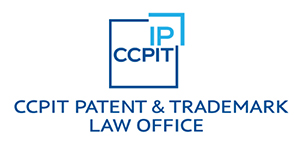|
CHINA |
As a country with written statute laws, China enjoys the inherent advantages of them, such as complete structure and rigorous logic. However, these laws have their own limitations, which are partly reflected in the gap between the universal enforceability of the laws and the diversity of individual cases. In addition, the legislation is a result of social changes that inevitably have a hysteresis quality.
In this regard, the case guidance system can play a role to a certain extent in bridging between the broad extension of legal rules and various specific cases. It can respond in a timely and effective way to all kinds of emerging social conflicts with authority, as only the Supreme People’s Court can select and issue any guiding cases.
It is clear that case guidance can play an important role in unifying the application of laws across the country, especially in response to new social developments accompanying by complicated disputes.
This article takes some specific cases handled by the author as examples of how to use the case guidance system in intellectual property (IP) litigation.
LEGAL BASIS

Assistant Director
CCPIT Patent and Trademark Law Office
Beijing
Tel: +86 10 6604 6247
It is believed that the Supreme People’s Court initially started to explore the possibility of introducing a precedent case system in 2005. In the following 10 years, the apex court continued this effort and issued several regulations on guiding cases.
Nowadays, the cases cited by interested parties can be taken into account by all levels of courts across the country. Some of these cases must be considered if they are guiding cases issued by the Supreme People’s Court. Four categories of precedent cases can be used as guiding cases in the trial, including:
-
- The guiding cases issued by the Supreme People’s Court;
- The typical cases published by the Supreme People’s Court and the effective judgments made by the Supreme People’s Court;
- The reference cases issued by the higher courts within the jurisdiction and the effective judgments made by the higher courts; and
- The effective judgments made by the relevant court or the appellate court.
The guiding cases issued by the Supreme People’s Court have the highest priority and must be taken into consideration by the court. The court must explain the reason why it concurs with the guiding case or not in its sentence if a category 1 case is cited by the interested party in the trial. For other categories of guiding cases, the court may or may not refer to the guiding case without any limitation to explanation of doing so.
IP LITIGATION
Although a relatively complete IP system has been established in China, large-scale IP litigation has only appeared in the past decade. Compared with traditional civilian and commercial disputes, IP litigation is still a new type of lawsuit. Therefore, it is common to see new types of disputes as well as controversial issues in IP litigation, which in turn tends to cause differences in the application of laws.
Moreover, IP litigation includes a considerable number of technical cases as technology constantly advances. The challenges brought about by these new technologies to social and legal systems are becoming increasingly obvious.
The advantage of the case guidance system lies in bridging the broad scope of the legal rules and the ever-changing details in individual cases by using prior cases. Guiding cases help to achieve uniformity in the application of laws across the country.
In IP cases, distilling the apparent and onerous facts into legal points and making factual and legal preparation for each of the points are always necessary processes. However, is it necessary to carry out the search for precedents for all the factual and legal aspects? This article holds that the answer is clearly no.
China is a country with statute laws. Therefore, in the case that the exact and suitable rules can be located in the existing laws and regulations, there is no need to search for precedents, and the case can proceed based on the relevant laws and regulations. The precedent is better used in complicated and controversial aspects of a case.
Although the need to search for precedents has been identified, the search is still an issue worthy of careful study. Real-world disputes are complex, and reflecting them in words can be complex and even open to interpretation. One or two keywords may not give the best result.
This puts higher demands on the comprehension of the litigation team, especially in a country with such a huge number of laws and regulations, and where many attorneys are not accustomed to case searching.
The core of a search lies in accurately grasping the relevant legal points under the ever-changing apparent facts. Taking a case handled by the author as an example, the aim of the search was the doctrine of equivalence when applying to numerical features of a claim.
The precedent the author’s team finally locked onto was a Supreme People’s Court case in which the guiding point summarised officially by the court was how to solve a partial overlap between the protection scope of an independent claim and its dependent claims in the trial – nothing to do with the doctrine of equivalence.
In this case, the equivalence of the numerical ranges in the independent claim had been addressed and explained, so this case was cited by the team as a relevant precedent. It can be seen from the above-mentioned case that precedent searching makes higher demands of an attorney’s comprehension of the essence of the facts. And of course, being familiar with the guiding cases issued by the Supreme People’s Court is also important.
USE OF PRECEDENT
After the appropriate precedent case has been retrieved, it needs to be used correctly. Some studies have shown that in actual IP litigation, there are many irregularities in submitting precedents, such as submitting cases from unknown sources, cases with ineffective judgments, irrelevant cases, etc.
In this regard, this article holds that the attorney should first indicate the source and effectiveness of a precedent before going into any details.
A variety of techniques can be used in the detailed analysis. For example, a Chinese attorney may refer to the common law system and use precedent by comparing the facts, pointing out the applicable laws, and asserting the outcome step by step.
The attorney may also go straight to the core of the case and match it with the key points of the decision in precedent cases to have the current case approach a preferable result.
In addition, an analogical argument can be used. In another case handled by the author, the key fact was that a selected range of numerical parameters can produce unexpected technical effects in a patent application. In contrast, a reference document disclosed a different numerical range without showing any unexpected effect.
However, the patent application was rejected as lacking inventive steps with respect to the reference because the examiner held that the numeric range was conventional and could be changed without paying any inventive effort when one skilled person had noticed a similar range in prior examples.
A precedent retrieved by the author’s team showed that even if a selected parameter range of a patent application falls within the range disclosed by a prior reference, the patent application is still patentable if the selected numerical range can result in unexpected technical effects.
Based on the above-mentioned precedent, the team asserted that if the patent application in the precedent is patentable when its parameter range is included in the parameter range of the prior art reference, but can result in unexpected technical effects, the patent application is naturally patentable.
This is because the parameter range that leads to these effects was not previously disclosed, yet it still can produce unexpected results. It was argumentum a maiore ad minus (from the larger-scale argument to the smaller one). The facts and the outcome become very clear, thanks to the precedent case the team found. The adverse verdict on the patent application was then reversed.
CONCLUSION
The case guidance system has been proven to play an important role in refining general rules, unifying judgment standards, forming judicial accumulation, promoting dispute settlement, and limiting improper judgments. The system is also of great significance for parties or agents to better safeguard their rights and interests in practice.

CCPIT PATENT AND TRADEMARK LAW OFFICE
10/F Ocean Plaza
158 Fuxingmennei Street
Beijing, 100031, China
Tel: +86 10 6641 2345
Email: mail@ccpit-patent.com.cn































